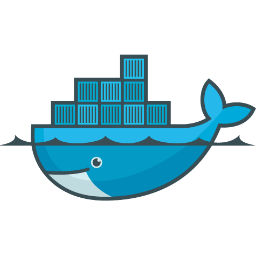
In this article, I’ll demonstrate how to leverage Makefile in order to release lightweight Docker image for production.
Sample Application code
package main
func main() {
println("hello world")
}Of course, do not forget to vendor your dependencies: godep save.
In order to create a release image, we first need to build the binary. We will have 2 Dockerfiles.
Main Dockerfile
The main Dockerfile is the “classic” one. For our example:
# Using google/golang as base image
FROM google/golang:stable
# Install Godep for vendoring
RUN go get github.com/tools/godep
# Recompile the standard library without CGO
RUN CGO_ENABLED=0 go install -a std
# Declare the maintainer
MAINTAINER Guillaume J. Charmes <guillaume@charmes.net>
# For convenience, set an env variable with the path of the code
ENV APP_DIR $GOPATH/src/example
# Set the entrypoint as the binary, so `docker run <image>` will behave as the binary
ENTRYPOINT ["/example"]
# Add the sources to the APP_DIR
ADD . $APP_DIR
# Compile the binary and statically link
RUN cd $APP_DIR && CGO_ENABLED=0 godep go build -o /example -ldflags '-d -w -s'Note that the godep install and the CGO disabled std rebuild are done before the maintainer, this allows to keep the cache for this part when the maintainer changes.
In a future article, I’ll talk more in depth about static linking in Go (the -ldflags and go install std thingy)
Release Dockerfile
In order to release, we need a second Dockerfile. As Docker builds directories, we need to create a subdirectory release.
The release Makefile is very straight forward and look like this:
# Use "scratch" as base: it is an empty image.
FROM scratch
# Set the entrypoint as the binary, so `docker run <image>` will behave as the binary
ENTRYPOINT ["/example"]
# Add the binary. As it is statically linked, no need to add libc or anything else.
ADD example /Now, we need a Makefile to automate the process
Makefile
The Makefile allow for easy dependency scripting.
The goal is to push a “release” image. In order to do this, we need to have that image built.
In order to build this image, we need the binary, In order to get the binary, we need to build.
In order to build, we need the source. For convenience, we monitor . instead of each individual go files.
The default rule is all which triggers build
build depends on .build which is a file. If it exists then move on to the next dependency, otherwise, execute the rule. .build depend on .. This means that if anything changes in the current directoty, the cache gets invalidated and the rule will be executed.
In order to build, we call docker build and create the .build file.
The result is a full blown image roughly 600MB. release will help with this.
The first step is to extract the binary and /etc/ssl. The /etc/ssl is mandatory only if you plan on using SSL (otherwise, Go will complain it does not find the certificates). Once extracted in a tarball, we build the release Dockerfile.
NAME = example
DOCKER_IMAGE = 127.0.0.1:5000/$(NAME)
all : build
.build : .
docker build -t $(NAME) .
docker inspect -f '{{.Id}}' $(NAME) > .build
build : .build
release/$(NAME) : build
docker run --rm --entrypoint /bin/sh $(NAME) -c 'tar cf - /$(NAME) /etc/ssl' > $@ || (rm -f $@; false)
docker build --rm -t $(DOCKER_IMAGE) release
release : release/$(NAME)
push : release
docker push $(DOCKER_IMAGE)
clean :
$(RM) .build release/$(NAME)
.PHONY : push release build all cleanDirectory tree
In the end, the directory tree should look like this:
$> tree
.
├── Dockerfile
├── Godeps
│ ├── Godeps.json
│ ├── Readme
│ └── _workspace
├── Makefile
├── main.go
└── release
└── Dockerfile
3 directories, 6 filesConclusion
As we saw, the release process is a dependency cascade, which make the Makefile very useful.
The advantages of using something like this is easily shown by docker images:
Original image
$> docker images example
REPOSITORY TAG IMAGE ID CREATED VIRTUAL SIZE
example latest e68fcc5482a8 10 seconds ago 605.3 MBRelease image
$> docker images 127.0.0.1:5000/example
REPOSITORY TAG IMAGE ID CREATED VIRTUAL SIZE
127.0.0.1:5000/example latest 6e9e455bf60d 4 seconds ago 617.6 kB
Wow, is that release image really below 1 MB in size?
ReplyDeleteYes, but this is only an hello world. Usually, a more complex program (using more libraries) will be around 4 or 5 MB.
ReplyDeleteThese are fantastic numbers. I just looked it up on my server - my smallest image (mysql) is 335 MB and my largest (discourse) is almost 1.5 GB.
ReplyDeleteIt is your second article that I read. Thanks for your interesting topics. Is virtual data room software interesting for you? I'm asking coz would like to read article on this topic in your blog! thanks!
ReplyDelete